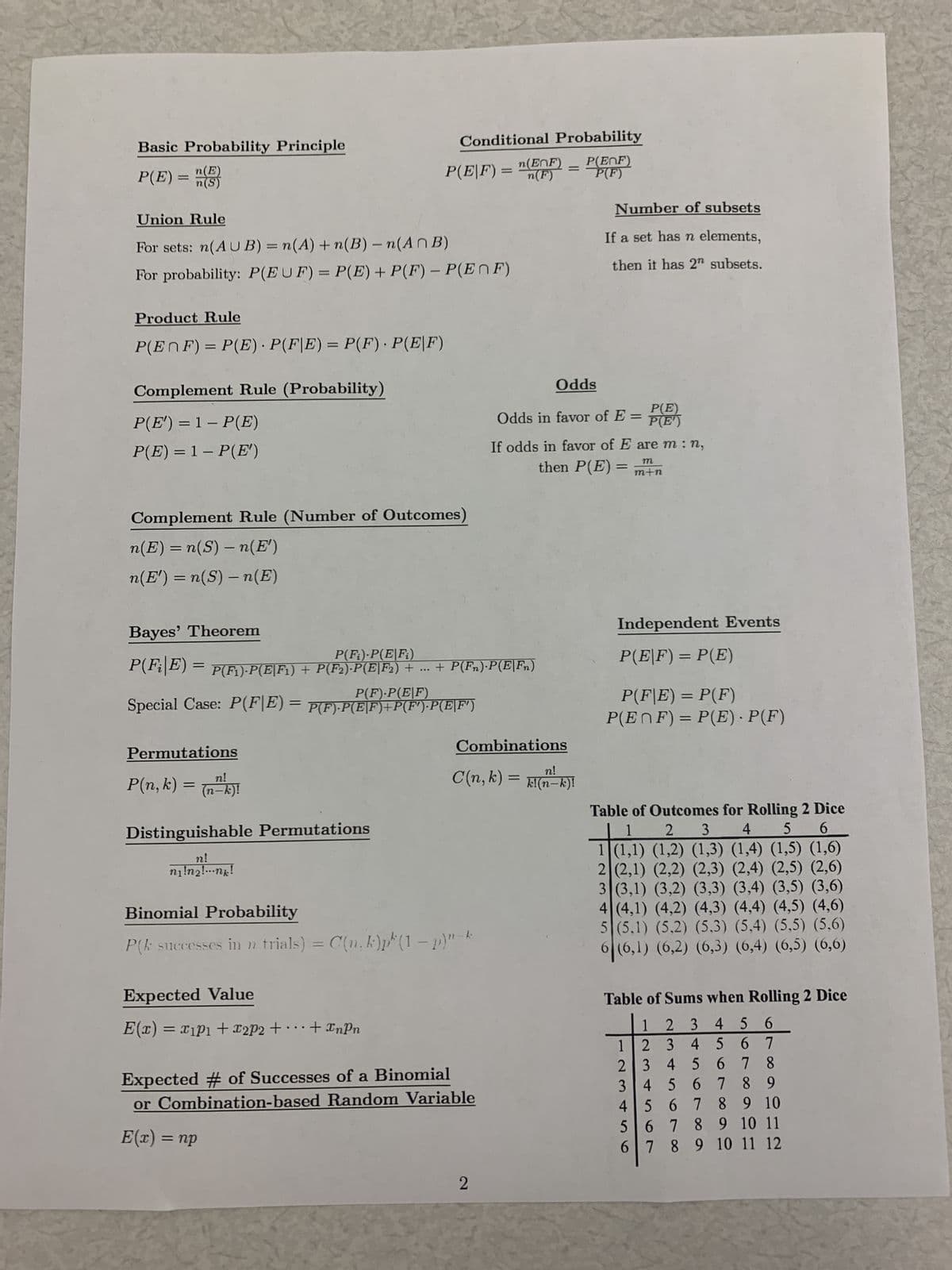A single die is rolled. Find the probabilities of the following results, and give your answers as reduced fractions. Show your work and justify your answers. Use the formula sheet to help if needed. a, The number rolled is less than 5, given that the number rolled is even.
A single die is rolled. Find the probabilities of the following results, and give your answers as reduced fractions. Show your work and justify your answers. Use the formula sheet to help if needed. a, The number rolled is less than 5, given that the number rolled is even.
Functions and Change: A Modeling Approach to College Algebra (MindTap Course List)
6th Edition
ISBN:9781337111348
Author:Bruce Crauder, Benny Evans, Alan Noell
Publisher:Bruce Crauder, Benny Evans, Alan Noell
Chapter5: A Survey Of Other Common Functions
Section5.6: Higher-degree Polynomials And Rational Functions
Problem 6E: Population Genetics-First Cousins This is a continuation of Exercise 5. Double first cousins are...
Related questions
Question
1. A single die is rolled. Find the probabilities of the following results, and give your answers as reduced fractions. Show your work and justify your answers. Use the formula sheet to help if needed.
a, The number rolled is less than 5, given that the number rolled is even.

Transcribed Image Text:Basic Probability Principle
P(E) = n(s)
Product Rule
P(EnF) = P(E) · P(FE) = P(F) · P(E|F)
Union Rule
For sets: n(AUB) = n(A) + n(B) - n(ANB)
For probability: P(EUF) = P(E) + P(F) − P(E^F)
Complement Rule (Probability)
P(E') = 1 - P(E)
P(E) = 1 - P(E')
Complement Rule (Number of Outcomes)
n(E) = n(S) - n(E')
n(E') = n(S) — n(E)
Permutations
P(n, k)
Bayes' Theorem
P(F;).P(E|F;)
P(F;|E) = P(F1).P(E|F1) + P(F2)·P(E|F2) + ... + P(Fn)·P(E|Fn)
P(F).P(EF)
Special Case: P(F|E) = P(F).P(E|F)+P(F').P(E\F')
n!
(n-k)!
Conditional Probability
n(EnF) P(ENF)
P(F)
n(F)
Distinguishable Permutations
n!
n₁!n₂!...nk!
P(E|F) =
=
Expected Value
E(x) = x₁p₁ + x2P2 +
·+XnPn
Binomial Probability
P(k successes in n trials) = C(n. k)p(1-p)"-h
...
Combinations
C(n, k) = k!(n-k)!
Expected # of Successes of a Binomial
or Combination-based Random Variable
E(x) = np
=
2
Odds
Odds in favor of E=
If odds in favor of E are m:n,
then P(E)
m
m+n
Number of subsets
If a set has n elements,
then it has 2" subsets.
=
P(E)
P(E')
Independent Events
P(E|F) = P(E)
P(F|E) = P(F)
P(EnF) = P(E). P(F)
Table of Outcomes for Rolling 2 Dice
1
2
3
6
4 5
1|(1,1) (1,2) (1,3) (1,4) (1,5) (1,6)
2 (2,1) (2,2) (2,3) (2,4) (2,5) (2,6)
3 (3,1) (3,2) (3,3) (3,4) (3,5) (3,6)
4 (4,1) (4,2) (4,3) (4,4) (4,5) (4,6)
5 (5,1) (5,2) (5.3) (5,4) (5,5) (5,6)
6(6,1) (6,2) (6,3) (6,4) (6,5) (6,6)
Table of Sums when Rolling 2 Dice
2 3 4 5 6
5 6
6 7 8
1
1 2 3 4
2
3 4
5
3 4 5
6
7 8 9
4 5 6
7
8 9 10
5 6 7
8
9 10 11
6 7 8
9 10 11 12
Irod
Expert Solution
This question has been solved!
Explore an expertly crafted, step-by-step solution for a thorough understanding of key concepts.
This is a popular solution!
Trending now
This is a popular solution!
Step by step
Solved in 2 steps with 1 images

Recommended textbooks for you

Functions and Change: A Modeling Approach to Coll…
Algebra
ISBN:
9781337111348
Author:
Bruce Crauder, Benny Evans, Alan Noell
Publisher:
Cengage Learning

Algebra & Trigonometry with Analytic Geometry
Algebra
ISBN:
9781133382119
Author:
Swokowski
Publisher:
Cengage

Elementary Linear Algebra (MindTap Course List)
Algebra
ISBN:
9781305658004
Author:
Ron Larson
Publisher:
Cengage Learning

Functions and Change: A Modeling Approach to Coll…
Algebra
ISBN:
9781337111348
Author:
Bruce Crauder, Benny Evans, Alan Noell
Publisher:
Cengage Learning

Algebra & Trigonometry with Analytic Geometry
Algebra
ISBN:
9781133382119
Author:
Swokowski
Publisher:
Cengage

Elementary Linear Algebra (MindTap Course List)
Algebra
ISBN:
9781305658004
Author:
Ron Larson
Publisher:
Cengage Learning